Corporate Governance
1. Corporate Governance Philosophy
The objective of establishing Aozora’s corporate governance policy is to ensure management discipline and to create a framework of checks and balances in order to continue reflecting our management philosophy in the execution of our daily business operations. For this purpose, Aozora continues to work toward a more transparent corporate governance structure by focusing on the proper establishment and operation of its governance framework as an important management initiative.
Management adheres to compliance with laws and regulations in all areas of business execution. Management identifies a broad range of risks that regularly occur in business operations and assesses their potential impact on Aozora’s business in order to ensure optimal transparency, maintain strong internal controls, and strengthen the framework for the effective balancing of risk and return.
In order to improve efficiency through the separation of management oversight and business execution as well as transparency by establishing an appropriate corporate governance structure, the Board of Directors, including the outside directors, determines basic management policy and management strategies and oversees the execution of business operations. Executive officers, including the Representative Directors, conduct daily business operations with authority delegated to them by the Board of Directors.
The Management Committee is the highest decision-making body for the execution of daily business, and is comprised of members from among the executive officers, who are approved and appointed by the Board of Directors. This structure improves the speed of decision-making, while at the same time the Executive Officers’ Meeting, which comprises all executive officers, is held in order to exchange important information. Sub-committees are also established to improve efficiency of the execution of business operations.
Corporate Governance Structure


Ratio of Outside Directors

Ratio of Female Directors

Director's Length of Tenure

(1) Board of Directors
- Chairperson:
- Koji Yamakoshi
- Directors:
- 9 (5 outside directors)
The Board of Directors establishes important basic policies for business operations and oversees the execution of duties by executive officers entrusted with daily business operations. Outside directors’ meetings include only the outside directors and are convened several times throughout the year to allow for the discussion and exchange of views on topics, including Aozora’s executive structure, key business issues, and the operation of the Board of Directors, from an independent outside director’s perspective.
(2) Audit & Supervisory Board
- Chairperson:
- Satoshi Hashiguchi
- Audit & Supervisory Board Members:
- 3 (2 outside ASB members)
Aozora operates under the Audit & Supervisory Board (ASB) system. The ASB performs business and accounting audits regarding the execution of duties by directors and executive officers in accordance with relevant laws and regulations. ASB meetings are held with all ASB members attending to receive reports on important audit matters and discuss or resolve them as needed.
(3) Nomination and Remuneration Committee
- Chairperson:
- Sakie Tachibana Fukushima
- Directors:
- 3 (2 outside directors)
The Nomination and Remuneration Committee, the majority of which is comprised of outside directors, provides the Board of Directors with recommendations, including prospective candidates for Board and ASB members as well as other important employees. In addition, the Nomination and Remuneration Committee determines the remuneration of directors and executive officers and makes recommendations to each ASB member regarding their remuneration.
(4) Audit and Compliance Committee
- Chairperson:
- Hideyuki Takahashi
- Directors:
- 2 (2 outside directors)
The Audit and Compliance Committee, which is comprised of outside directors, reviews the adequacy and effectiveness of matters relevant to the establishment of internal control systems, including internal and external audits, risk management, compliance, and credit audits.
(5) Management Committee
- Chairperson:
- Hideto Oomi
The Management Committee is held on a weekly basis, in principle, and determines important matters related to Aozora’s execution of daily business in accordance with the policies set forth by the Board. The Management Committee has the following sub-committees to which it delegates authority: ALM Committee, Integrated Risk Committee, Credit Committee, Investment Committee, CAPEX Committee, Customer Protection Committee, and Sustainability Committee. Sub-committees are comprised of members with substantive knowledge and experience in multiple aspects of Aozora’s business operations, as well as sound decision-making capabilities.
- The Board of Directors shall not have more than 12 Directors, which is the maximum number of Directors stipulated in the Articles of Incorporation.
- Nomination of Director candidates shall be based on the “Basic Policy for Nominating Directors and Audit & Supervisory Board Member Candidates, and Appointing and Dismissing Senior Management Including the CEO.”
- The composition of the Board of Directors shall take into consideration diversity and mix of experience, with a wealth of knowledge and expertise in areas including banking and finance, financial accounting, risk management, legal and compliance, and so forth, in addition to deep insight of the Aozora’s business.
- The Board of Directors shall be comprised of internal directors who possess extensive knowledge and experience in business execution and outside directors who supervise management from an objective standpoint. Judgment of outside director’s independence shall be made based on the “Independence Criteria for Outside Directors and Outside Audit & Supervisory Board Members” and the percentage of independent outside directors, in principle, shall be a half or more.
Outside Director (5 members)

Outside Director (Independent)
Sakie Tachibana Fukushima
|
Length of tenure |
2 years |
|---|---|
|
Board meeting attendance |
100% |
|
Aozora shares owned |
782 |
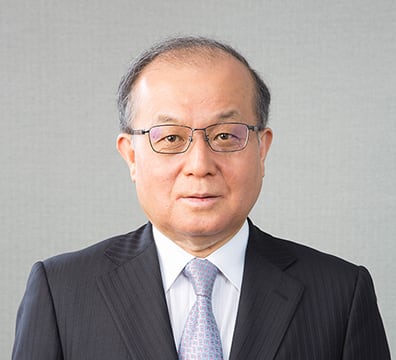
Outside Director (Independent)
Hideyuki Takahashi
|
Length of tenure |
1 year |
|---|---|
|
Board meeting attendance |
100% |
|
Aozora shares owned |
61 |
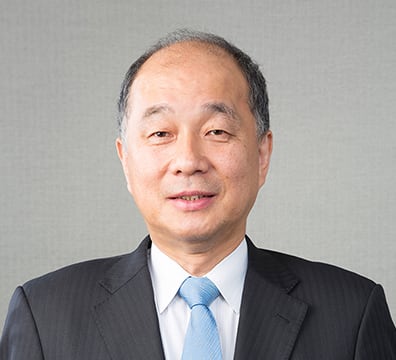
Outside Director (Independent)
Hideaki Saito
|
Length of tenure |
1 year |
|---|---|
|
Board meeting attendance |
100% |
|
Aozora shares owned |
154 |
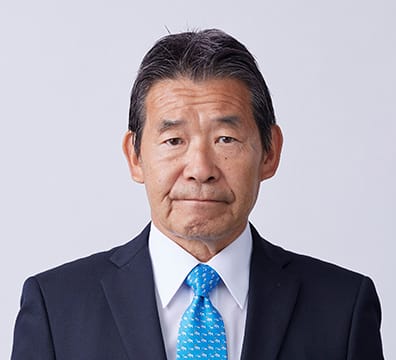
Outside Director (Independent)
Koichi Tadano
|
Length of tenure |
ー |
|---|---|
|
Board meeting attendance |
ー |
|
Aozora shares owned |
ー |
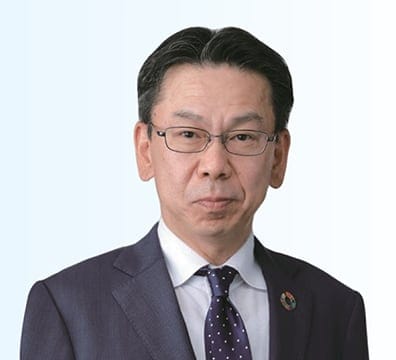
Outside Director
Hiromasa Kawashima
|
Length of tenure |
ー |
|---|---|
|
Board meeting attendance |
ー |
|
Aozora shares owned |
ー |
Internal Director (4 members)

Chairman, Director
Koji Yamakoshi
|
Length of tenure |
4 years |
|---|---|
|
Board meeting attendance |
100% |
|
Aozora shares owned |
5,555 |

Representative Director and President, Chief Executive Officer (CEO)
Hideto Oomi
|
Length of tenure |
3 years |
|---|---|
|
Board meeting attendance |
100% |
|
Aozora shares owned |
10,311 |
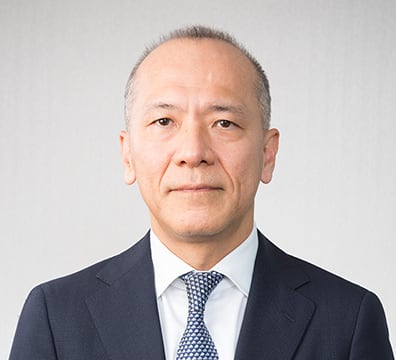
Representative Director and Deputy President
Masayoshi Ohara
|
Length of tenure |
1 year |
|---|---|
|
Board meeting attendance |
100% |
|
Aozora shares owned |
3,011 |

Director and Senior Managing Executive Officer
Takashi Kato
|
Length of tenure |
ー |
|---|---|
|
Board meeting attendance |
ー |
|
Aozora shares owned |
6,664 |
Outside Audit & Supervisory Board Member (2 members)

Audit & Supervisory Board Member (Independent)
Toraki Inoue
|
Length of tenure |
8 years |
|---|---|
|
Board meeting attendance |
100% |
|
ASB meeting attendance |
100% |
|
Aozora shares owned |
273 |
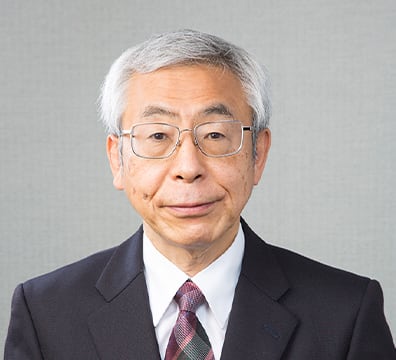
Audit & Supervisory Board Member (Independent)
Junichi Maeda
|
Length of tenure |
1 year |
|---|---|
|
Board meeting attendance |
100% |
|
ASB meeting attendance |
100% |
|
Aozora shares owned |
618 |
Standing ASB Member (1 member)

Audit & Supervisory Board Member
Satoshi Hashiguchi
|
Length of tenure |
6 years |
|---|---|
|
Board meeting attendance |
100% |
|
ASB meeting attendance |
100% |
|
Aozora shares owned |
2,156 |
- Four of the outside directors as well as the outside Audit & Supervisory Board members satisfy the requirements for independence set forth by the Tokyo Stock Exchange and Aozora’s “Independence Criteria for Outside Directors and Outside Audit & Supervisory Board Members” and are designated as independent.
Hiromasa Kawashima has not been designated as independent because he is an officer of Daiwa Securities Group Inc., which is a major shareholder. - Length of tenure refers to service as of June 25, 2024.
- Board meeting and ASB meeting attendance refers to meetings held during FY2023.
- Number of Aozora shares owned as of March 31, 2024
As a “Company with Audit and Supervisory Board” as defined in the Companies Act, Aozora has established a corporate governance structure with the Board of Directors and Audit & Supervisory Board in order to ensure management discipline and mutual checks and balances.
The Board of Directors is comprised of internal directors who possess extensive knowledge and experience in business execution and outside directors who supervise management from an objective standpoint, aiming for efficiency, objectivity, and transparency. To promote sustainable growth and enhance Aozora’s corporate value over the medium- to long-term, extensive knowledge is required not only in “corporate management,” “banking and finance,” “financial accounting,” “legal, compliance/risk management,” and “human capital,” which are fundamental to the management of financial institutions, but also in “global affairs,” “IT/DX,” and “sustainability,” which require higher levels of expertise.


|


|
|---|---|


|


|
Aozora works to further enhance the effectiveness of its Board of Directors through a continuous improvement process (PDCA cycle) of analyzing and evaluating Board effectiveness each fiscal year as well as considering and providing solutions to new and existing issues.
Self-evaluations by Directors
In light of its fiduciary duties and accountability to Aozora’s shareholders, the Board of Directors continues to perform self-evaluations with the aim of promoting sustainable growth and enhancing Aozora’s corporate value over the medium- to long-term based on the assessment of and views on its management and oversight functions that leverage directors’ and Audit & Supervisory Board members’ knowledge, experience, and capabilities. In FY2023, self-evaluations were conducted based on a questionnaire of all members of the Board present during the target period, and the results were shared after thorough Board discussions.
Structure of the Board of Directors
Aozora’s Board of Directors ensures objectivity and transparency as more than half of the Board are outside directors.
While operating as a “Company with Audit and Supervisory Board,” Aozora also has the Nomination and Remuneration Committee, which is comprised of 50% outside directors and is also chaired by an outside director, as well as the Audit and Compliance Committee, which is comprised of only outside directors. Both committees act to complement the oversight of executive officers, including representative directors, and conduct checks and balances of them.
Outside directors’ meetings were convened three times throughout FY2023 to allow for the discussion and exchange of views on multiple topics, including Aozora’s executive structure, key business issues in light of the rapidly changing business environment, and the operation of the Board of Directors, from an independent outside director’s perspective.
The Board of Directors primarily focused its discussions on the themes listed under “Board of Directors, Audit & Supervisory Board, and Committee Meetings” below, based on preliminary explanations and directors’ roundtable meetings.
In addition, the nomination of independent outside directors and the appointment of a CEO based on the CEO succession plan were resolved by the Board of Directors after deliberation at, and recommendations from, the Nomination and Remuneration Committee. With the appointment of a new CEO, Aozora transitioned to a new management structure as of April 1, 2024.
Evaluations in FY2023
In FY2023, the Board determined that its roles and responsibilities continued to be properly fulfilled under the aforementioned framework through constructive discussions and an exchange of ideas on important issues, including business strategy, as well as the effective oversight and monitoring of management executives. The Board also assessed that overall Board management was proper and effective.
The Board of Directors for FY2024 will strive to make the Board’s roles and responsibilities more effective and proper by engaging in management issues based on the self-evaluation and conducting a PDCA cycle while further utilizing the sub-committees under the Board as well as the outside directors’ meetings.
Main Agenda Items for FY2023
Board of Directors (13 meetings held / 2 hours and 32 minutes average deliberation time)
- Confirmation of progress of the business plan for FY2023, the first year of the new Mid-term Plan
- U.S. non-recourse office loan management status and response policy
- Securities portfolio management status and response policy
- Business operations of subsidiary GMO Aozora Net Bank
- Integrated risk report, compliance program, annual internal audit plan
- Revision of quarterly financial results, full-year earnings forecasts, and dividends
- Development of business plan for FY2024
- Nomination of independent outside director and Audit & Supervisory Board member candidates
- Appointment of CEO based on CEO succession plan and transition to new management structure
- Consideration of alliances with other companies
- Others
Audit & Supervisory Board (14 meetings held)
- Progress and results of year-end audit, interim audit, and quarterly review
- Key Audit Matters (KAM)
- Status of self-assessment and write-off/reserve
- Status of internal audit implementation
- Consent to the nomination of candidates for Audit & Supervisory Board members and alternate Audit & Supervisory Board members
- Consent to the reappointment of an independent accounting auditor and remuneration proposals
Nomination and Remuneration Committee (6 meetings held)
- Compensation plan for sustainable growth and compensation amount
- Nomination of independent outside director and Audit & Supervisory Board member candidates
- Appointment of CEO based on CEO succession plan and transition to new management structure
Audit and Compliance Committee (6 meetings held)
- Status of internal audit
- Matters regarding integrated risk management
- Status of progress of compliance program
- Status of asset assessment
To support its directors and Audit & Supervisory Board members, Aozora invites outside instructors to conduct training as needed. In addition, newly appointed outside directors and outside Audit & Supervisory Board members attend informational sessions on operations multiple times by the executive officers in charge of each business group and supporting unit.
Directors and Audit & Supervisory Board members that were newly appointed in FY2023 collected and shared information on Aozora’s main governance-related regulations and operations before assuming office. They also participated in several individual briefing sessions to deepen their understanding of Aozora’s overall business, financials, IT, human resources, risk management, and sustainability. Even after assuming their new positions, they continued to receive reports on business conditions directly from the executive officers in charge and have interviews with the management of Group companies to gain a better understanding of the current state of the Group’s business.
Basic Guidelines for Nominating Director Candidates
Candidates should:
- Possess significant management knowledge and expertise
- Have superior foresight and insight, be able to make management decisions and exercise sound judgment
- Be committed to the duties of Aozora’s director
- Be able to earn the trust of Aozora’s stakeholders, including shareholders
- In the case of outside directors, be able to exercise management oversight and offer appropriate advice
The composition of the Board of Directors shall take into consideration diversity and mix of experience, with a wealth of knowledge and expertise in areas including banking and finance, financial accounting, risk management, legal and compliance and so forth in addition to having a thorough understanding of the Aozora’s business.
Basic Guidelines for Nominating Audit & Supervisory Board Member Candidates
Candidates should:
- Possess substantial management knowledge and expertise
- Have knowledge of important financial rules and regulations, finance and accounting
- Be objective, impartial, and able to perform duties from an independent standpoint
- Be able to earn the trust of Aozora’s stakeholders
- Have the ability to communicate effectively with shareholders, the Board of Directors, and senior management to ensure management soundness and transparency
Reappointment of Directors and Audit & Supervisory Board Members
For reappointment of directors and Audit & Supervisory Board members, the above basic guidelines, performance of his/her duties, and contribution to Aozora’s management during his/her term of office shall be considered each fiscal year. The maximum term of office of each official corporate title of full-time director shall be set out in the internal regulations of the Management Committee. The maximum term of office for outside directors shall be 10 terms or 10 years. The maximum term of office for outside Audit & Supervisory Board members shall be 3 terms or 12 years.
Basic Guidelines for Appointing and Dismissing Senior Management (Executive Officers)
(1) Basic guidelines for appointing senior management
- Possesses substantial knowledge and expertise required for proper business operations
- Has superior foresight and insight, ability to make decisions on business operations and exercise sound judgment
- Demonstrates leadership with subordinates and the ability to assume responsibility for important management functions related to Aozora’s business strategy
(2) Basic guidelines for dismissing senior management
- Acts against the public interest
- Becomes unable to continue performing duties due to health problems
- Causes serious damage to Aozora’s corporate value due to negligence or similar reasons
Basic Guidelines for Appointing and Dismissing the CEO
(1) Basic guidelines for appointing the CEO
In addition to the basic guidelines for appointing senior management:
- Has superior top management leadership skills
- Has substantial management experience and accomplishments
- Optimal candidate for the continued improvement of Aozora’s corporate value
(2) Basic guidelines for dismissing the CEO
In addition to the basic guidelines for dismissing senior management:
- Fails to adequately exercise top management leadership
- Determined to be unqualified as CEO due to failure in fulfilling shareholders’ mandate
Development of CEO Succession Plan
We have developed a succession plan that incorporates the items below, with the aim of appointing CEO successors who can contribute to the sustainable enhancement of Aozora’s corporate value for smooth business succession in the future.
- Overall policy including a roadmap
- Capability requirements for CEO in light of strategic directions and environmental changes
- Candidate selection and training plans
Procedure for Nominating Director Candidates, and Appointing and Dismissing Senior Management Including the CEO
The Nomination and Remuneration Committee, of which the majority comprises outside directors, deliberates on the nomination of director candidates as well as the appointment and dismissal of the CEO and other senior management, and makes recommendations to the Board of Directors.
The Board of Directors determines whether or not to accept the recommendations of the Nomination and Remuneration Committee for nominating director candidates as well as appointing the CEO and other senior management in accordance with the basic guidelines for such nomination or appointment.
In cases where the CEO or other senior management falls under any of the above basic guidelines for dismissal, in principle, the Board of Directors will determine whether or not to dismiss them in accordance with the recommendations of the Nomination and Remuneration Committee.
Procedure for Nominating Audit & Supervisory Board Members
The Nomination and Remuneration Committee, of which the majority comprises outside directors, deliberates on the nomination of the Audit & Supervisory Board member candidates and makes recommendations to the Board of Directors, taking into consideration the views of the Audit & Supervisory Board members.
The Board of Directors determines whether or not to accept the recommendations of the Nomination and Remuneration Committee with the consent of the Audit & Supervisory Board in accordance with the relevant basic guidelines.
Outside directors, outside Audit & Supervisory Board members, and their candidates who do not fall under any of the following categories shall be deemed to be independent.
- (1) A person who currently is, or has been during the last 10 years prior to his/her taking office, an executive (executive director, executive officer, or other employee) of Aozora or its subsidiaries.
(2) A person who had served as a director, accounting advisor, and/or Audit & Supervisory Board member (excluding a person who served as an executive) of Aozora or its subsidiaries at some time during the 10 years prior to his/her taking office, had also served as an executive of Aozora or its subsidiaries in the 10 years prior to his/her taking office as director, accounting advisor, and/or Audit & Supervisory Board member. - A person who is a major business partner (2% or more of consolidated net revenue of Aozora or consolidated net sales of the said major business partner) of Aozora or its subsidiaries or an executive of said major business partner.
- A consultant, accounting expert, and/or legal expert, who has received significant sums of money or other assets (more than an average of 10 million yen per year over the last three years) from Aozora or its subsidiaries in addition to any directors’ remuneration, and/or a person who belongs to a consulting firm, accounting firm, and/or legal firm, etc. which has received significant amounts of money or other assets (2% or more of consolidated sales revenue of the said firm) from Aozora or its subsidiaries.
- A person who has been any of the following (1) to (3) during the last 10 years prior to his/her taking office.
(1) A person who has been an executive and/or non-executive director of the parent company of Aozora
(2) An Audit & Supervisory Board member of the parent company of Aozora (limited to cases when the outside Audit & Supervisory Board member shall be designated as independent)
(3) A person who has been an executive of fellow subsidiaries of Aozora. - A person who has “recently” fallen under any of 1 through 4 above. (“Recently” means a time deemed to be substantively the same as the present. For example, a person is not deemed to be independent if that person was an executive of a major business partner at the time when a proposal to the General Meeting of Shareholders regarding his/her appointment was decided.)
- A close relative (a spouse or family member within the second degree of kinship, excluding those who are not an “important person”) who falls under any of 1 through 5 above. (“Important person” means, for example, an executive officer/manager-level employee of a company, and in the case of 3 above, a holder of professional qualification such as a Certified Public Accountant and Attorney-at-Law.) In the case of 1 above, those who fall under each item at present.
Basic Guidelines for Determining Remuneration for Directors, etc.
In order to pursue its mission to “contribute to the development of society through the creation of new value-added financial services,” Aozora recognizes the necessity of providing proper incentives and a work environment that allows successful and high-potential human resources to perform their duties consistently while maintaining high morale, motivation, and pride based on a sound mindset. To this end, Aozora has designed a remuneration system based on the following basic guidelines.
- Remuneration framework in line with Aozora’s vision
Aozora aims to build a remuneration framework that reflects business performance in line with its objectives and values.
- Remuneration framework appropriately reflecting Aozora’s performance
Aozora’s remuneration framework is based on “pay for performance” and reflects our commitment to sustainable growth, sound risk-taking through appropriate risk management, compliance, and customer protection.
- Remuneration framework aligned with the interests of shareholders and other stakeholders
Aozora has adopted a remuneration framework that is consistent with the values of its shareholders and other stakeholders.
- Effective governance in remuneration decisions
Aozora ensures that remuneration decisions are made with full independence and transparency as well as freedom from specific influence.
Policy on Determination of the Amount and Calculation Method of Remuneration for Directors
In order to ensure that the process for determining individual directors’ remuneration is transparent, independent, and impartial, the Nomination and Remuneration Committee, which Aozora voluntarily established and mainly comprises outside directors entrusted by the Board of Directors, determines the amounts payable to each director in accordance with Aozora’s policy of deciding the remuneration of individual directors as approved by the Board based on the Committee’s recommendation.
The members of the Nomination and Remuneration Committee are as follows:
-
-
Chairperson:
-
Sakie Tachibana Fukushima, Outside Director
-
-
-
Member:
-
Hideaki Saito, Outside Director
-
-
-
Member:
-
Hideto Oomi, Representative Director and President
-
The Nomination and Remuneration Committee members in charge of determining the amount of each directors’ remuneration for FY2023 were as follows:
-
-
Chairperson:
-
Sakie Tachibana Fukushima, Outside Director
-
-
-
Member:
-
Hideaki Saito, Outside Director
-
-
-
Member:
-
Kei Tanikawa, Representative Director and President
-
- Mr. Hideto Oomi replaced Mr. Kei Tanikawa as Representative Director and President as of April 1, 2024 and became a member of the Nomination and Remuneration Committee.
In principle, Aozora pays base remuneration (fixed remuneration), bonus (performance-based remuneration), and equity compensation type stock options (non-monetary remuneration) to full-time directors and only base remuneration (fixed remuneration) to outside directors.
(i) Base Remuneration (Fixed Remuneration)
Base remuneration, which comprises a fixed amount that varies by type of position (full-time or part-time), job title, and responsibilities, is paid on a monthly basis during the tenure of each director.
Data from an outside specialized agency is used to determine whether the level of base remuneration is appropriate.
For President and Deputy President, base remuneration is determined within a remuneration range predetermined by the type of position while taking into consideration factors including the levels of their responsibilities and experience.
(ii) Bonus (Performance-based Remuneration)
Bonuses (performance-based remuneration) are initially set at the equivalent of 40% of the base remuneration amount (the “Base Bonus Amount”) and the Nomination and Remuneration Committee determines the exact amount of bonus for each full-time director by applying a rate within a predetermined range of 0% to 250% of the Base Bonus Amount while considering the key performance indicators of the fiscal year as shown below. Bonuses are paid within a specific period following the end of each fiscal year. Specifically, the rate and bonus amount for each director are determined primarily based on the following key performance indicators, and also in consideration of Aozora’s overall performance for the relevant fiscal year.
- Achievement rates of business profit and net earnings
- Results achieved for key performance indicators (KPIs), such as ROE, capital adequacy ratio, business-related profit (Business profit + Gains/losses on stock transactions) per employee, and business-related profit RORA ((Business profit + Gains/losses on stock transactions)/Risk-weighted assets)
- Assessment of undue risk-taking and occurrence of serious compliance violations
- Implementation and introduction of initiatives and strategies from a mid- to long-term perspective, including the launch of new businesses
- Progress and achievement of sustainability initiative targets announced by Aozora
Among the aforementioned performance indicators, achievement rates of business profit and net earnings are the basic indicators for Aozora’s business results. Achievement rate for ROE, capital adequacy ratio, business-related profit per employee and business-related profit RORA as KPIs are key indicators for the targets in Aozora’s Mid-term Plan. The achievement rates of these indicators, therefore, are taken into account as quantitative evaluation criteria for determining bonus amounts. In order to encourage not only short-term business results but also mid- to long-term initiatives, Aozora also fully considers important qualitative evaluation criteria for determining bonus amounts, such as the assessment of undue risk-taking and occurrence of serious compliance violations, and the implementation/introduction of initiatives and strategies from a mid- to long-term perspective, including the launch of new businesses, as well as the progress and achievement of sustainability initiative targets announced by Aozora.
The targets and results of the indicators used to determine performance-based remuneration for FY2023 are stated below. Based on these results, bonuses (performance-based remuneration) were not paid to full-time directors.
|
Original earnings forecast announced at the beginning of FY2023 |
FY2023 results |
|
|---|---|---|
|
Business profit |
25.5 billion yen |
(8.5 billion yen) |
|
Net earnings*1 |
24 billion yen |
(49.9 billion yen) |
|
Mid-term Plan targets*2 |
FY2023 results |
|
|
ROE |
8% or higher |
ー*3 |
|
Capital adequacy ratio |
Minimum 9% |
9.2% |
|
Business-related profit per employee*4 |
20 million yen |
(2.5 million yen) |
|
Business-related profit RORA*5 |
1.3% |
(0.1)% |
- Profit attributable to owners of parent
- Mid-term Plan “Aozora 2025” (FY2023-25)
- Not stated due to a loss attributable to owners of parent
- Business-related profit = business profit + Gains/losses on stock transactions
- Business-related profit RORA: Business-related profit / Risk-weighted assets
(iii) Equity Compensation Type Stock Options (Subscription Rights to Shares as Non-monetary Remuneration)
The Nomination and Remuneration Committee discusses and sets the proper ratio of cash remuneration to equity compensation type stock options (subscription rights to shares as non-monetary remuneration) in order for stock options to serve as a sound incentive to promote sustainable growth, and determines the exact number of stock options at the equivalent of 25% of the base remuneration based on a resolution by the Board of Directors in accordance with the Internal Regulations for Equity Compensation Type Stock Options. Equity compensation type stock options are granted within a specific period following the end of each fiscal year.
Full-time Director Remuneration Framework


Reasons for the Board of Directors’ Judgment That Remuneration for Individual Directors in FY2023 Was in Accordance with the Above Policy
The Nomination and Remuneration Committee determined the remuneration for individual directors from several perspectives, including an analysis of business target achievements and each director’s contribution to Aozora’s business operations, while ensuring consistency with its policy of determining remuneration. The Board of Directors respected such determination while judging that it was made in accordance with the determination policy.
Policy on Determination of the Amount and Calculation Method of Remuneration for ASB Members
ASB members discuss and determine their individual remuneration amounts in consideration of deliberations and proposals made at the Nomination and Remuneration Committee.
ASB members only receive base remuneration (fixed remuneration), which is paid on a monthly basis during their tenure in accordance with the policy below.
Base Remuneration (Fixed Remuneration)
Base remuneration comprises a fixed amount which is determined mainly in consideration of the type of position (full-time or part-time) and assigned audit duties as well as the details and levels of director remuneration. Data from an outside specialized agency is used to determine whether the level of base remuneration is appropriate.
Remuneration of Directors and ASB Members (April 1, 2023 to March 31, 2024)
|
Category |
Number |
Remuneration in total |
|||
|---|---|---|---|---|---|
|
Fixed remuneration |
Performance-based remuneration (bonus) |
Non-monetary remuneration |
|||
|
Directors (excl. outside directors) |
5 |
223 |
177 |
ー |
45 |
|
ASB member (excl. outside ASB members) |
1 |
29 |
29 |
ー |
ー |
|
Outside directors |
6 |
56 |
56 |
ー |
ー |
|
Outside ASB members |
3 |
24 |
24 |
ー |
ー |
- The number and remuneration in the above table include those for one internal director, two outside directors, and one outside Audit & Supervisory Board member who retired at the close of the 90th General Meeting of Shareholders on June 22, 2023.
- Based on the results for FY2023, bonuses were not paid to full-time directors.
- No director or ASB member received a total remuneration of 100 million yen or more.
|
Name of committee |
Chaired by |
The number of meetings |
Purpose |
|---|---|---|---|
|
Asset and Liability Committee |
CFO |
16 |
Monitor and evaluate important matters and deliberate and determine management policies regarding asset and liability management, including plans for the sources and uses of funds |
|
Integrated Risk Committee |
CRO |
15 |
Develop risk management procedures and verify and approve risk |
|
Credit Committee |
CCRO |
81 |
Approve credit transactions and establish a credit risk asset portfolio aligned with management policies |
|
Investment Committee |
CCRO |
45 |
Approve investment transactions, establish investment policies, ensure accurate understanding of investment risk, build and maintain a secure and profitable portfolio |
|
CAPEX Committee |
CTO |
17 |
Approve and monitor IT projects and facilities-related projects required to realize business plans and strategies |
|
CAPEX Committee |
Head of Corporate Strategy Unit |
10 |
Approve and monitor IT projects and facilities-related projects required to realize business plans and strategies |
|
Customer Protection Committee |
Head of Compliance and Governance Unit |
23 |
Establish and improve the customer protection management framework from the perspective of customer explanation, support, customer information, outsourcing, and conflict of interest |
|
Sustainability Committee |
CEO |
8 |
Basic matters of Group-wide sustainability promotion as well as important matters regarding sustainability promotion mainly in Aozora’s business and initiatives as a business entity |
- The job title of Chief Technology Officer (CTO) has been changed to Chief Information Officer (CIO) due to the organizational change effective from April 1, 2025.